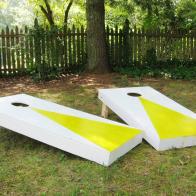1 / 26
Photo: Flynnside Out
Growing Up Green
To teach daughters Grace and River the basics of gardening, the Petersons invested in an affordable, lightweight and easy-to-assemble greenhouse located just steps from their kitchen. Whether they're collecting worms for the gardening beds or keeping potted flowers watered, the entire family enjoys playing in the dirt.









